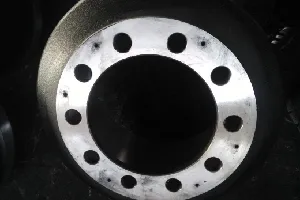
-
 Afrikaans
Afrikaans -
 Albanian
Albanian -
 Amharic
Amharic -
 Arabic
Arabic -
 Armenian
Armenian -
 Azerbaijani
Azerbaijani -
 Basque
Basque -
 Belarusian
Belarusian -
 Bengali
Bengali -
 Bosnian
Bosnian -
 Bulgarian
Bulgarian -
 Catalan
Catalan -
 Cebuano
Cebuano -
 Corsican
Corsican -
 Croatian
Croatian -
 Czech
Czech -
 Danish
Danish -
 Dutch
Dutch -
 English
English -
 Esperanto
Esperanto -
 Estonian
Estonian -
 Finnish
Finnish -
 French
French -
 Frisian
Frisian -
 Galician
Galician -
 Georgian
Georgian -
 German
German -
 Greek
Greek -
 Gujarati
Gujarati -
 Haitian Creole
Haitian Creole -
 hausa
hausa -
 hawaiian
hawaiian -
 Hebrew
Hebrew -
 Hindi
Hindi -
 Miao
Miao -
 Hungarian
Hungarian -
 Icelandic
Icelandic -
 igbo
igbo -
 Indonesian
Indonesian -
 irish
irish -
 Italian
Italian -
 Japanese
Japanese -
 Javanese
Javanese -
 Kannada
Kannada -
 kazakh
kazakh -
 Khmer
Khmer -
 Rwandese
Rwandese -
 Korean
Korean -
 Kurdish
Kurdish -
 Kyrgyz
Kyrgyz -
 Lao
Lao -
 Latin
Latin -
 Latvian
Latvian -
 Lithuanian
Lithuanian -
 Luxembourgish
Luxembourgish -
 Macedonian
Macedonian -
 Malgashi
Malgashi -
 Malay
Malay -
 Malayalam
Malayalam -
 Maltese
Maltese -
 Maori
Maori -
 Marathi
Marathi -
 Mongolian
Mongolian -
 Myanmar
Myanmar -
 Nepali
Nepali -
 Norwegian
Norwegian -
 Norwegian
Norwegian -
 Occitan
Occitan -
 Pashto
Pashto -
 Persian
Persian -
 Polish
Polish -
 Portuguese
Portuguese -
 Punjabi
Punjabi -
 Romanian
Romanian -
 Russian
Russian -
 Samoan
Samoan -
 Scottish Gaelic
Scottish Gaelic -
 Serbian
Serbian -
 Sesotho
Sesotho -
 Shona
Shona -
 Sindhi
Sindhi -
 Sinhala
Sinhala -
 Slovak
Slovak -
 Slovenian
Slovenian -
 Somali
Somali -
 Spanish
Spanish -
 Sundanese
Sundanese -
 Swahili
Swahili -
 Swedish
Swedish -
 Tagalog
Tagalog -
 Tajik
Tajik -
 Tamil
Tamil -
 Tatar
Tatar -
 Telugu
Telugu -
 Thai
Thai -
 Turkish
Turkish -
 Turkmen
Turkmen -
 Ukrainian
Ukrainian -
 Urdu
Urdu -
 Uighur
Uighur -
 Uzbek
Uzbek -
 Vietnamese
Vietnamese -
 Welsh
Welsh -
 Bantu
Bantu -
 Yiddish
Yiddish -
 Yoruba
Yoruba -
 Zulu
Zulu
Feb . 10, 2025 23:07
Back to list
drum brake mechanism
The drum brake mechanism is a crucial component in many vehicles, yet its presence is less celebrated compared to its disc brake counterpart. As an automotive expert with extensive industry experience, I will delve into the intricacies of drum brakes, highlighting their unique advantages, discussing common misconceptions, and providing authoritative insights into their functionality. This article serves as a comprehensive guide to understanding why drum brakes continue to hold their ground in the automotive market despite the widespread adoption of disc brakes.
Performance concerns usually stem from the fact that drum brakes tend to overheat more easily than disc brakes due to their enclosed design. Excessive heat buildup can lead to brake fade, where the braking efficiency decreases. However, innovations in venting and fin technology have been introduced to improve heat dissipation in drum brakes, making them a reliable choice for many applications. Trustworthiness in drum brake systems can be substantially bolstered through regular maintenance and inspection. Checking for wear and ensuring that the components are clean and properly adjusted is essential to sustaining their effectiveness and safety. Common maintenance tasks include replacing worn brake shoes, ensuring that the wheel cylinders are functioning correctly, and maintaining the cleanliness of the brake drum. In discussing expert perspectives, industry professionals recognize that drum brakes are not suited for high-performance vehicles due to their reduced heat management capacity. Nevertheless, they are perfectly adequate for commuter and everyday vehicles, supporting their continued use in a wide range of automotive markets. This dual perspective accommodates the qualities of drum brakes while acknowledging their limitations, fostering informed decision-making for consumers and manufacturers alike. In conclusion, while disc brakes are lauded for their powerful stopping capabilities, drum brakes offer distinct advantages that cannot be ignored. Their cost-effectiveness, self-energizing qualities, and protective design render them invaluable in specific applications. With ongoing innovations and improvements, drum brakes remain a viable and competitive choice in the automotive industry. Adopting a balanced view of their application, capabilities, and maintenance can lead to better-informed choices for vehicle manufacturers and consumers aiming to optimize performance, safety, and cost.


Performance concerns usually stem from the fact that drum brakes tend to overheat more easily than disc brakes due to their enclosed design. Excessive heat buildup can lead to brake fade, where the braking efficiency decreases. However, innovations in venting and fin technology have been introduced to improve heat dissipation in drum brakes, making them a reliable choice for many applications. Trustworthiness in drum brake systems can be substantially bolstered through regular maintenance and inspection. Checking for wear and ensuring that the components are clean and properly adjusted is essential to sustaining their effectiveness and safety. Common maintenance tasks include replacing worn brake shoes, ensuring that the wheel cylinders are functioning correctly, and maintaining the cleanliness of the brake drum. In discussing expert perspectives, industry professionals recognize that drum brakes are not suited for high-performance vehicles due to their reduced heat management capacity. Nevertheless, they are perfectly adequate for commuter and everyday vehicles, supporting their continued use in a wide range of automotive markets. This dual perspective accommodates the qualities of drum brakes while acknowledging their limitations, fostering informed decision-making for consumers and manufacturers alike. In conclusion, while disc brakes are lauded for their powerful stopping capabilities, drum brakes offer distinct advantages that cannot be ignored. Their cost-effectiveness, self-energizing qualities, and protective design render them invaluable in specific applications. With ongoing innovations and improvements, drum brakes remain a viable and competitive choice in the automotive industry. Adopting a balanced view of their application, capabilities, and maintenance can lead to better-informed choices for vehicle manufacturers and consumers aiming to optimize performance, safety, and cost.
Prev:
Latest news
-
What Are Drum BrakesNewsJul.07,2025
-
Understanding Brake Drum MaterialNewsJul.07,2025
-
Semi-Trailer Brake Drum: A Key Component for Extreme Loads and Long-Distance TransportNewsJul.07,2025
-
Drum Brake Pads for SaleNewsJul.07,2025
-
Brake Drums for SaleNewsJul.07,2025
-
Brake Drum ManufacturerNewsJul.07,2025
-
Aluminum Brake Drums: The Future of High-Performance CarsNewsJul.07,2025
